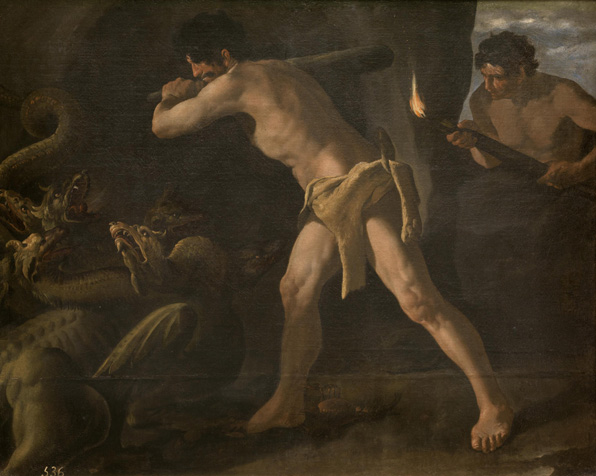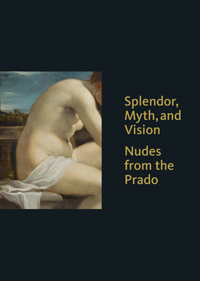
June 11–October 10, 2016
hercules as a symbol of the spanish monarchy
Francisco de Zurbarán
Spanish, 1598–1664
Hercules and the Hydra, 1634–35
Oil on canvas
52 3/8 x 65 3/4 in. (133 x 167 cm)
Museo Nacional del Prado, Madrid
P01249
As part of a larger decorative scheme, Francisco de Zurbarán painted a series of canvases depicting ten scenes from the life of the mythological hero for the upper walls of the Hall of Realms in the Buen Retiro Palace. While this palace was constructed primarily for the leisure of Philip IV and his court, the Hall of the Realms was also an important ceremonial and political space. In the creation of a glorified legacy for the Spanish monarchy, Hercules was claimed as its founder, and his mythological Labors (a series of challenges he undertook to atone for a crime of passion) symbolize virtues such as strength, faithfulness, and selflessness. Zurbarán’s powerful representation of the male nude shows his skill in handling light and shadow to articulate Hercules’s musculature, as well as his use of the male body to convey ideas about kingship and empire. The series was extraordinary for the artist: the Labors of Hercules was the only group of mythological paintings that he ever made.
A fully illustrated catalogue accompanies the exhibition, with an essay by Javier Portús on the Spanish royal taste in collecting and the role of the sala reservada, as well as a contemporary response to understanding the nude in Renaissance and Baroque painting by Jill Burke. The catalogue is published by the Clark and distributed by Yale University Press. Call the Museum Store at 413 458 0520 to order.



